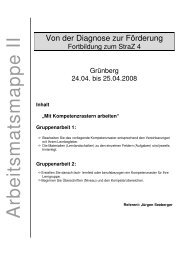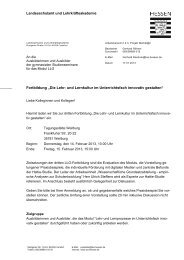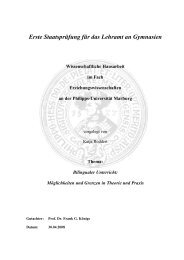PROFILING EUROPEAN CLIL CLASSROOMS
PROFILING EUROPEAN CLIL CLASSROOMS
PROFILING EUROPEAN CLIL CLASSROOMS
Create successful ePaper yourself
Turn your PDF publications into a flip-book with our unique Google optimized e-Paper software.
LEARNTIX<br />
Diversify Methods & Forms of Classroom<br />
Practice<br />
It is obviously not necessary to change the language of instruction in order to diversify<br />
learning methods and classroom practice. However, the introduction of <strong>CLIL</strong>, which is<br />
itself a set of methodologies, can act as a catalyst for change. In other words, the<br />
implementation of <strong>CLIL</strong> encourages careful analysis of existing methods and appropriate<br />
adaptation.<br />
What is characteristic of many <strong>CLIL</strong> methodologies is the synergy resulting from<br />
communication orientation on the language, the content, and the interaction as it<br />
takes place within the classroom. In <strong>CLIL</strong> all three of these play a pivotal role at some point<br />
or another. Recognition of the value of this type of broadly interactive methodology is one<br />
reason why teachers may adapt their methods.<br />
Key <strong>CLIL</strong> Features<br />
➔<br />
➔<br />
➔<br />
Some <strong>CLIL</strong> methods originate in language teaching and are transferred towards<br />
content teaching through <strong>CLIL</strong>, but this is not always the case<br />
Emphasis on the principles of learner autonomy is common when older learners are<br />
involved with this focus<br />
The diversification of methods often benefits from collaboration between teachers<br />
and work practice such as team-teaching<br />
Examples<br />
•<br />
•<br />
A programme in which native speaker assistants are given a specific role in a teaching<br />
situation through providing linguistic support and wider methodological opportunities<br />
A programme for the hearing-impaired which is based on ‘oralism’ in which teachers<br />
speak to the fully and partially hearing-impaired, but then introduce a sign language<br />
as the <strong>CLIL</strong> target language<br />
You cannot change the winds, but you can adjust the sails and learn to be a<br />
more skilful sailor (VocTalk)<br />
51
















